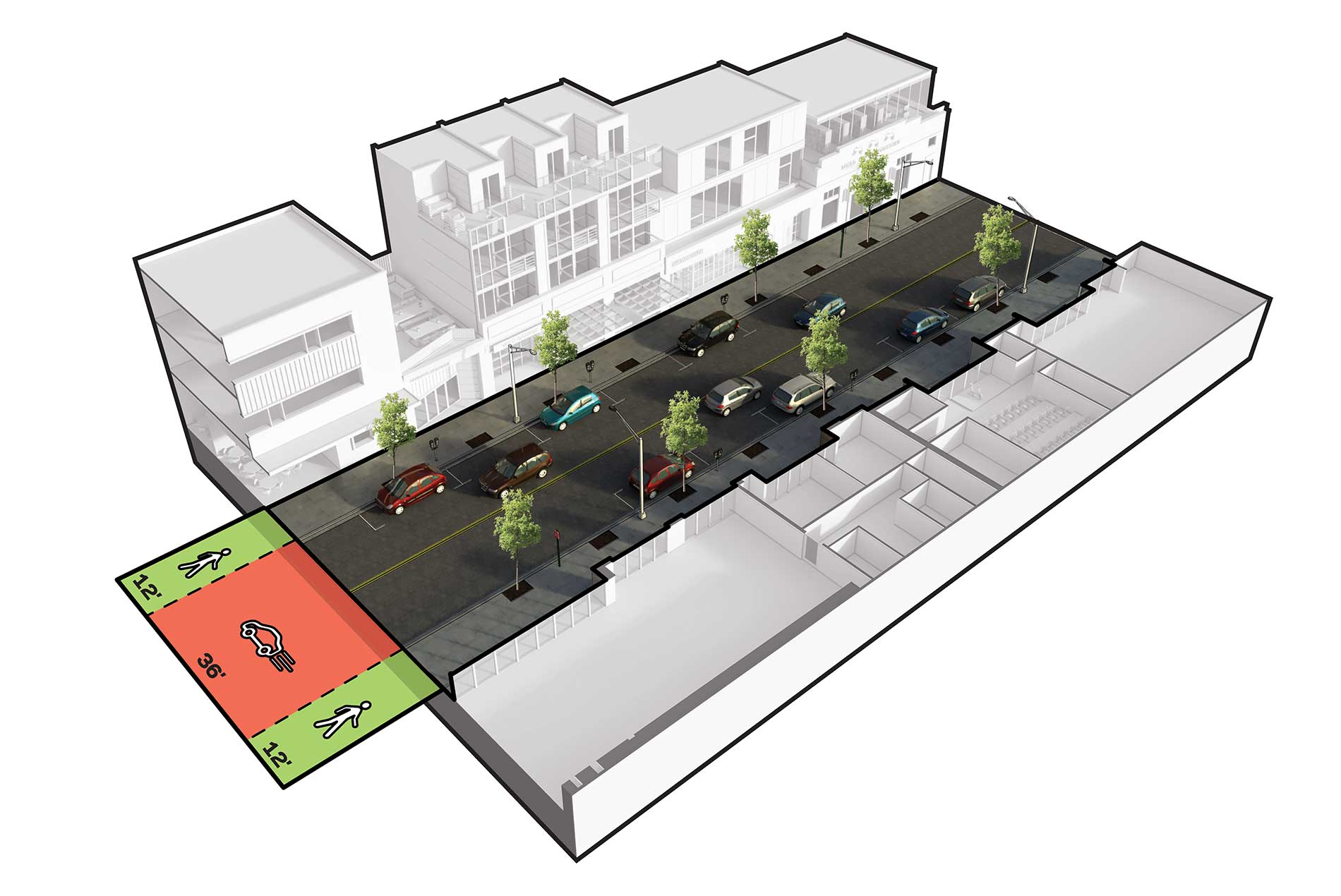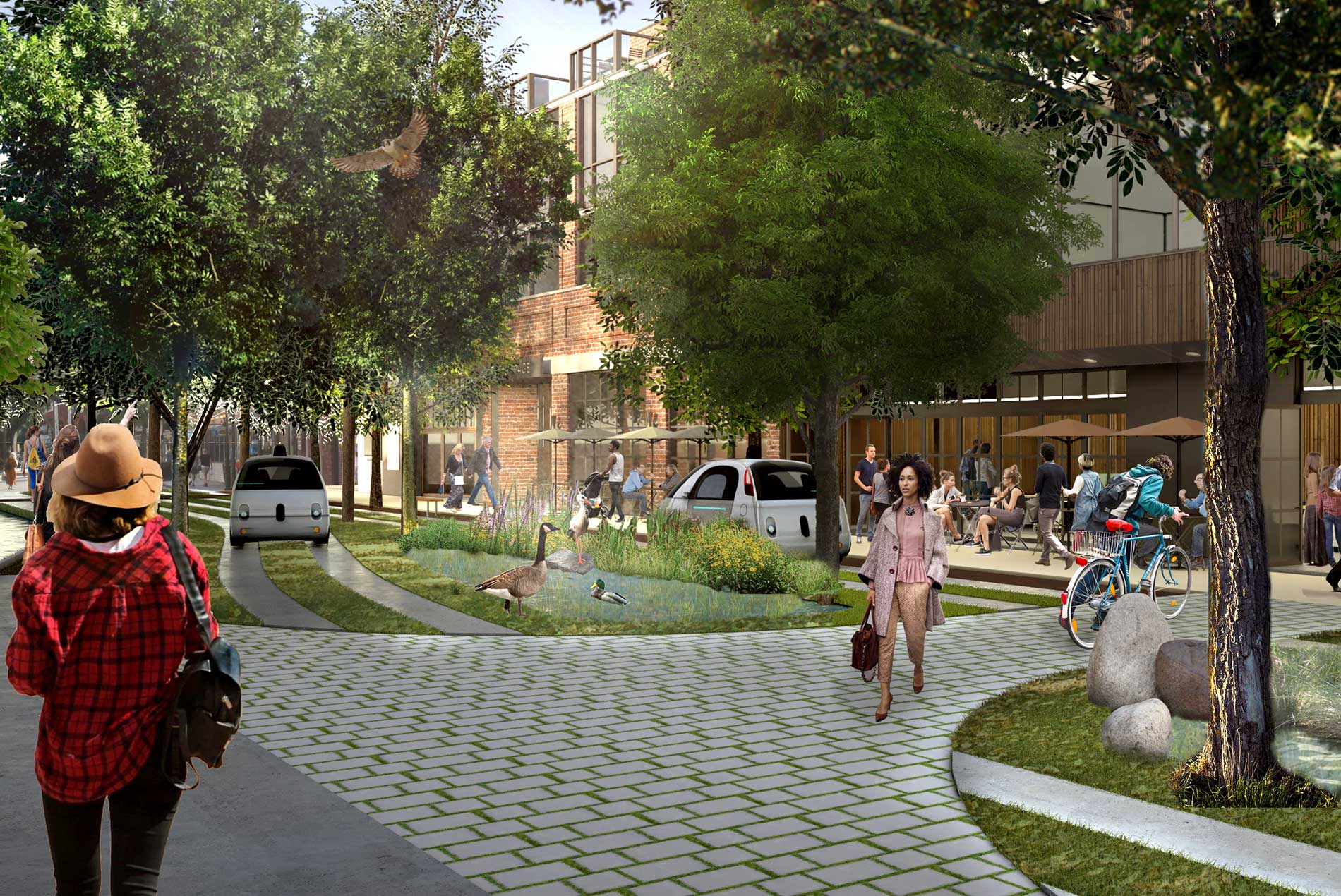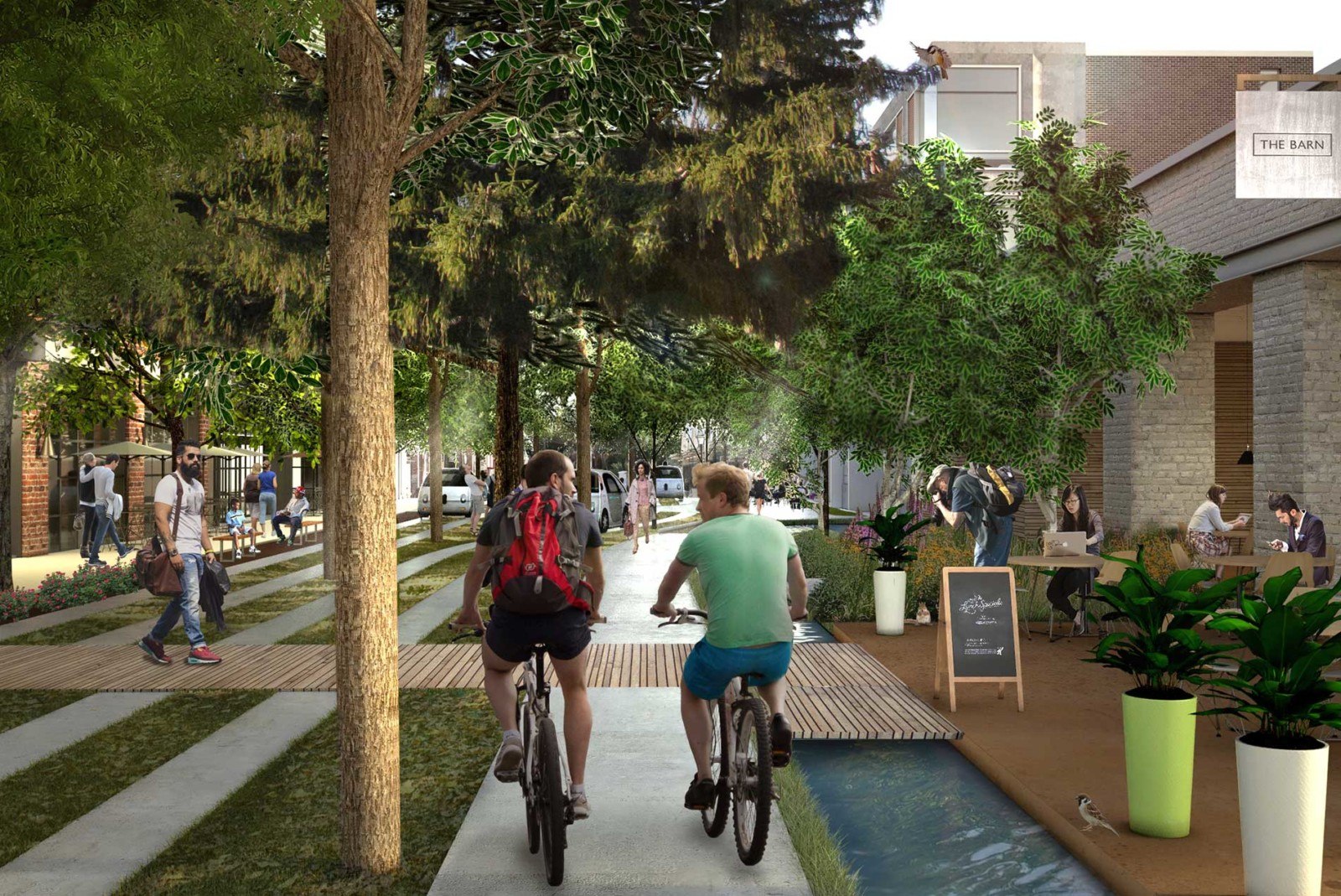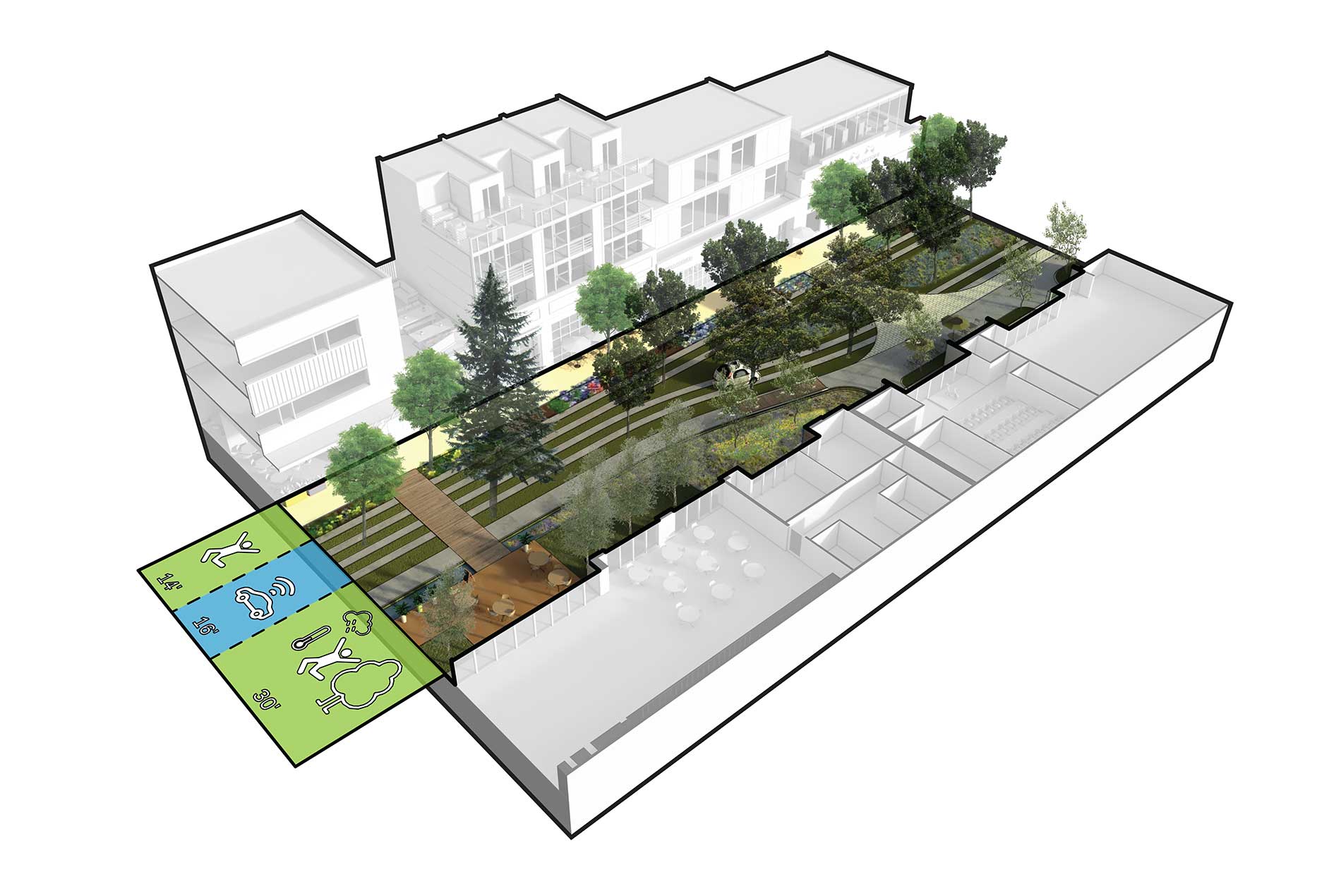Brian Jencek, director of planning, shares HOK’s vision for how driverless vehicles will impact the design of human-centered city streets.
Excerpted from Curbed:
While this future, whatever shape it takes, is still a ways away, that hasn’t stopped urban planners and designers from envisioning the layouts, laws, and look of our streets when AV technology becomes mainstream. A recent conceptual design exercise from HOK offers a more optimistic, environmentally friendly, and naturalistic take on how this technology may reshape our cities, one block at a time.

Typical street diagram
Proposed autonomous vehicle street diagram
Many proposals for AV-enabled streets feature incremental changes, such as wider sidewalks, or the addition of bioswales, landscape elements that filter water and pollution. This HOK proposal focuses on nature first, and sought to answer the question of how we look at streets when technology could fundamentally change how they operate.
These renderings present a vision placing the public realm first. Instead of incremental changes, HOK designers used nature and the landscape as their starting point.

Featuring carpets of grass underneath a tree canopy, this revamped roadway also offers solutions to many of the environmental and health problems challenging cities, from cutting carbon emissions and air pollution to reducing the urban heat island effect. It would add more shaded and quiet spaces for relaxation. Adoption of autonomous and electric vehicles, the designers argue, would give space to plants and pedestrian activity, more natural solutions to cutting pollution.
“The future of streets touches the rich and poor,” said Jencek. “We need to start a bigger dialogue about what our streets can become.”

